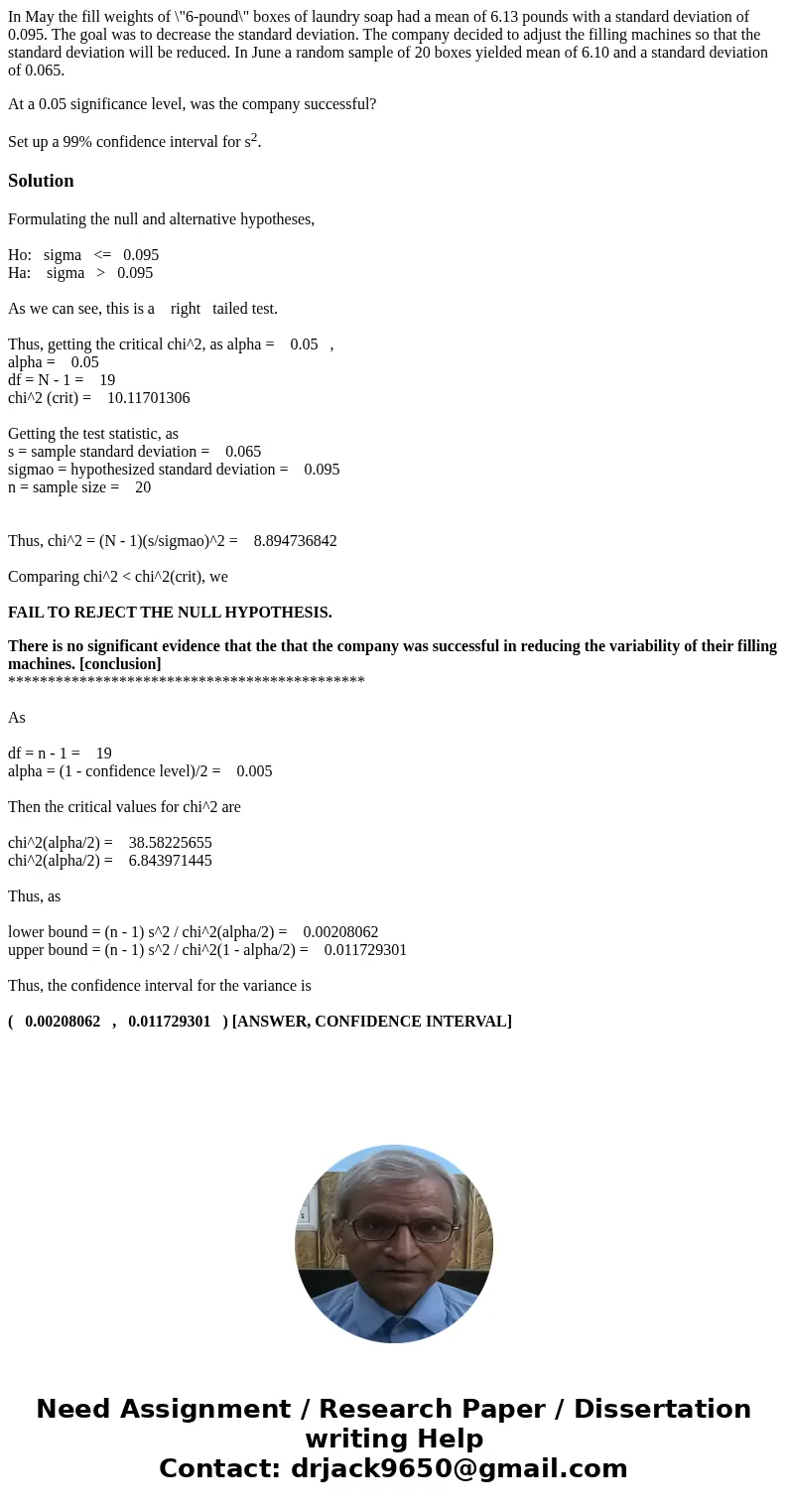In May the fill weights of 6pound boxes of laundry soap had
In May the fill weights of \"6-pound\" boxes of laundry soap had a mean of 6.13 pounds with a standard deviation of 0.095. The goal was to decrease the standard deviation. The company decided to adjust the filling machines so that the standard deviation will be reduced. In June a random sample of 20 boxes yielded mean of 6.10 and a standard deviation of 0.065.
At a 0.05 significance level, was the company successful?
Set up a 99% confidence interval for s2.
Solution
Formulating the null and alternative hypotheses,
Ho: sigma <= 0.095
Ha: sigma > 0.095
As we can see, this is a right tailed test.
Thus, getting the critical chi^2, as alpha = 0.05 ,
alpha = 0.05
df = N - 1 = 19
chi^2 (crit) = 10.11701306
Getting the test statistic, as
s = sample standard deviation = 0.065
sigmao = hypothesized standard deviation = 0.095
n = sample size = 20
Thus, chi^2 = (N - 1)(s/sigmao)^2 = 8.894736842
Comparing chi^2 < chi^2(crit), we
FAIL TO REJECT THE NULL HYPOTHESIS.
There is no significant evidence that the that the company was successful in reducing the variability of their filling machines. [conclusion]
*********************************************
As
df = n - 1 = 19
alpha = (1 - confidence level)/2 = 0.005
Then the critical values for chi^2 are
chi^2(alpha/2) = 38.58225655
chi^2(alpha/2) = 6.843971445
Thus, as
lower bound = (n - 1) s^2 / chi^2(alpha/2) = 0.00208062
upper bound = (n - 1) s^2 / chi^2(1 - alpha/2) = 0.011729301
Thus, the confidence interval for the variance is
( 0.00208062 , 0.011729301 ) [ANSWER, CONFIDENCE INTERVAL]

 Homework Sourse
Homework Sourse